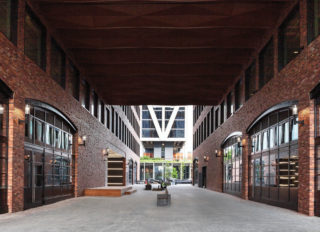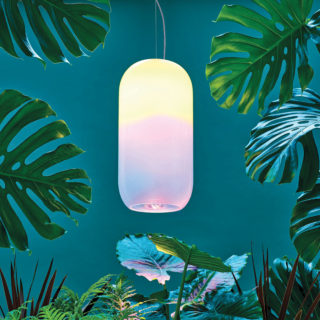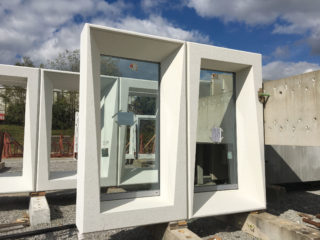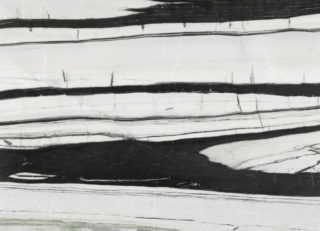
Over the last few decades, it’s become clear that the expression “you are what you eat” applies just as much to buildings as it does to bodies. And, like a person, what a building consumes creates an impact far beyond any individual footprint.
In this issue, we take a closer look at the materials and mate- rial considerations that are changing the way we build today, from experimental compounds that offer a window into the future of construction, to ancient building materials, such as stone, that can now be accessed and evaluated in new ways.
We’ve asked practitioners and researchers what construction materials have them most excited, and how they’re applying their own research findings to projects of all scales. And we dive into changing standards for stamping a building with a clean bill of health, based on the implications of embodied energy on our climate.
A keen awareness of humanity’s impact on the environment is reflected in conversations happening across many fields of design. An array of such projects is highlighted in the latest edition of the Cooper Hewitt Design Triennial, “Nature,” on view through January 20. In February, MoMA will dedicate a show, “Material Ecologies,” to the work of Neri Oxman, an architect and designer whose research creates a new vision for the convergence of nature with art and engineering (see Fred Bernstein’s interview with MoMA curator Paola Antonelli on page 24 of this issue). Several new books celebrate the relation- ship between architecture and materials, including two stunners from Phaidon’s fall list: Stone, by William Hall, and Ezra Stoller: A Photographic History of Modern American Architecture, by Pierluigi Serraino.
From here I yield the floor (and the remainder of this page) to some of the architects, designers, and researchers who generously offered their own insights for this issue, and thank our team of contributing writers who temporarily immersed themselves in new material worlds. We hope you find the work a possible futures presented in this issue as thrilling as we do.
From current favorites to future wishes, a sampling of the materials on the minds of architects, designers, and researchers:
“Sheet pile can be the answer for site retaining walls in tight spaces. Naturally weathering to warm brown, its aesthetic blends well with plants, wood, and other warm metals.”
—Signe Nielsen, FASLA, Principal, Mathews Nielsen Landscape Architects
“Lately I’ve been thinking a lot about light as a material. I’ve been experimenting with some of the physical aspects of photography, such as light-sensitive papers and emulsions, looking for ways to marry those analog, traditional techniques with new tools of digital fabrications.”
—Noa Raviv, designer and technologist
“A material I hope will exist in the future is one that helps our indoor environment become probiotic—that is, to support those invisible microbes that are conducive to a healthy, environmental microbiome. On this, see research by the BioBE center in Oregon, and also some experiments by the architect David Benjamin to create bio- receptive surfaces.”
—William Myers, curator and author of Biodesign: Nature + Science + Creativity
“We are currently in awe of an acoustical product by Baux, which we’re hoping to use on the ceiling of some public spaces in an apartment building. Their Acoustic Pulp is made of sustainably harvested Swedish fir and pine trees, recycled water, non-GMO wheat bran, potato starch, plant-derived wax, citrus fruit peels, and no chemicals. It sounds like something you could eat.”
—Lauren Schlesinger, AIA, and Adam Glickman, AIA, Principals, Glickman Schlesinger Architects
“A lot of our projects require particular consideration of acoustic performance. In spaces where there is an emphasis on pure forms and the play of natural and artificial light, finding monolithic materials that also lend acoustic attenuation are very hard to come by, outside of acoustic plaster products that are expensive and hard to maintain. We’d love to see innovation in a wider range of acoustic materials that can be applied to a substrate or that have an inherently abstract expression.”
—Miriam Peterson and Na- than Rich, Principals, PRO- Peterson Rich Office












